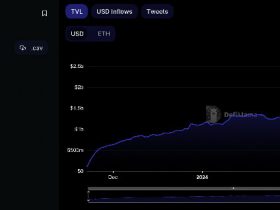Curve Finance‘s decentralized finance (defi) expansion plans highlight the deployment of new lending contracts, enabling arbitrage traders to capitalize on profitable trading opportunities.
Curve rolls out new lending contracts
The introduction of lending contracts by Curve Finance opens up new avenues for arbitrage traders, presenting them with the opportunity to potentially secure substantial profits.
The deployment of these lending contracts signifies Curve’s entry into the competitive defi lending market. By allowing users to lend their assets through smart contracts, Curve is diversifying its offerings and providing its users with more ways to participate in the defi ecosystem.
This move is expected to attract a new wave of users to the platform, including those interested in the lending and borrowing aspects of defi in addition to its core user base of liquidity providers and traders.
Traders can now leverage discrepancies in interest rates across different DeFi platforms, borrowing at lower rates and lending at higher ones to earn a profit.
Moreover, the early deployment of these contracts, even before the official launch of a user interface (UI) on its defi platform, suggests that some liquidity may already be entering the platform, providing an early-bird advantage to those who are ready to interact with the contracts directly.
However, users are not barred from engaging in lending activities. The contracts have been deployed, meaning that those familiar with interacting directly with smart contracts can already start lending their assets.
Furthermore, these lending contracts by Curve Finance could have broader implications for the defi market. It signals a growing trend among defi protocols to offer a more comprehensive range of financial services, mimicking traditional financial institutions but with the added benefits of decentralization, transparency, and user sovereignty.
While Curve Finance and other platforms continue to innovate, the defi sector is set to become an increasingly robust and versatile alternative to conventional financial systems.
Lending contracts are deployed.
Arb traders – please study them to prepare for juicy arbs. Some liquidity might come in before the UI 😉
It’s not the launch yet, but you can lend and borrow alreadyhttps://t.co/9IpD8qbIwM
— Curve Finance (@CurveFinance) February 23, 2024
Curve Finance weathering the storm
Last July, Curve Finance found itself under siege. The attack resulted in a substantial loss exceeding $61 million from its liquidity pools.
The assailant directed their focus on stable pools within Curve Finance, exploiting vulnerabilities in versions of the Vyper programming language through reentrancy attacks.
The fallout from the attack was substantial, with notable losses including $13.6 million from Alchemix’s alETH-ETH pool, $11.4 million from JPEGd’s pETH-ETH pool, and $1.6 million from Metronome’s sETH-ETH pool.
In response to the breach, Curve Finance, alongside Metronome and Alchemix, unveiled a collaborative initiative aimed at recovering the pilfered funds. As part of this effort, they extended a 10% bounty of the stolen funds as an incentive to the bad actors, while imploring them to return the remaining 90%.
In August 2023, the hacker acquiesced to the bug bounty offer, facilitating the return of approximately $12.7 million, comprising 4,820 Alchemix Ethereum (alETH) and 2,258 ETH, to the Alchemix Finance team. The restitution process commenced following the hacker’s acceptance of the bug bounty offer.
In a positive turn of events, Curve Finance has managed to recuperate a significant portion, equivalent to 73%, of the funds siphoned during the breach, with reports indicating the full retrieval of tokens stolen from AlchemixFi.
This restitution has not only restored confidence in the defi project but has also bolstered sentiment surrounding Curve and its governance tokens, particularly CRV.







Leave a Reply